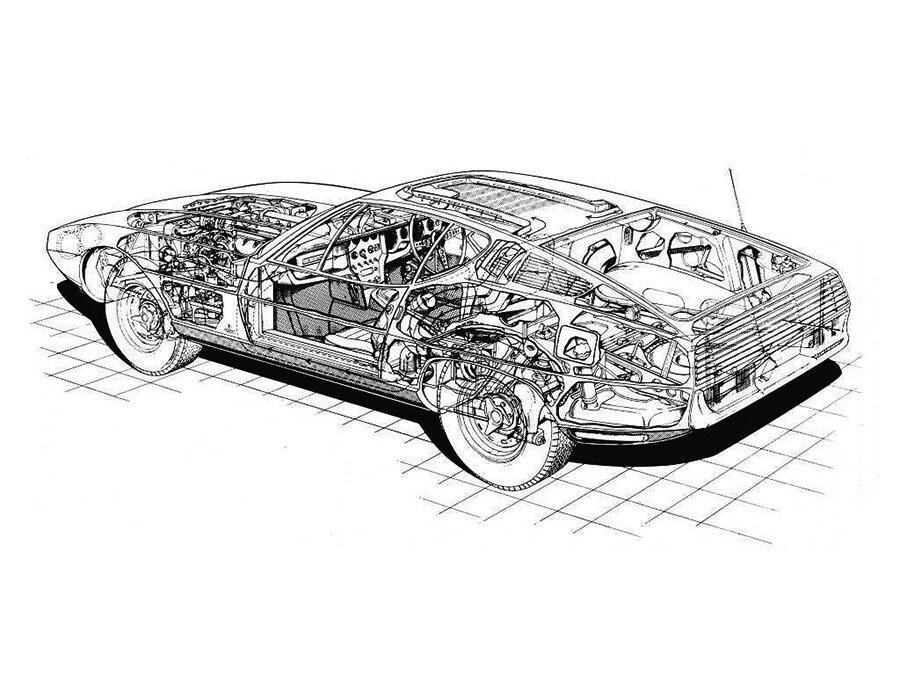Guide: Jaguar E-type 4.2 Bertone Pirana - a Historical & Technical Appraisal
/BACKGROUND
In 1967, the Daily Telegraph newspaper took the unusual step of commissioning a promotional design concept from Turin coachbuilder, Bertone.
The fully functional machine was conceived as an example of the ideal car and therefore needed to mix style and performance with practicality.
At the time, Nuccio Bertone’s design house was arguably the industry’s hottest property. Led by chief stylist, Marcello Gandini, the Italian outfit had recently produced a series of groundbreaking creations to include the Lamborghini Miura and Lamborghini Marzal.
The Daily Telegraph wanted their new car in time for the London Motor Show that took place in October 1967. This gave Bertone a short five-month timescale to fulfil the request.
A number of British companies were brought on board for the project to include Jaguar, Smiths, Triplex, Dunlop and Connolly.
CHASSIS / ENGINE / TRANSMISSION
Jaguar supplied an E-type 2+2 chassis and running gear.
The steel semi-monocoque chassis (numbered 1E 50950) was fitted with Jaguar’s 4235cc straight six DOHC engine complete with triple SU carburettors.
Peak output was 265bhp at 5400rpm and 283lb-ft at 4000rpm.
A sporty four-speed manual gearbox was chosen instead of an automatic.
Dunlop disc brakes were fitted to all E-types and, for this application, the firm also supplied wider than standard 15 x 7.5-inch cast alloy wheels.
BODYWORK
Bertone started work on the design in May 1967; the look of ‘controlled speed’ was a pre-requisite.
The E-type’s front-engine layout and reasonably long wheelbase enabled Marcello Gandini to produce a sleek and very low profile Grand Tourer.
Inspiration for the Pirana came from the one-off Lamborghini Marzal that Bertone had unveiled at the Geneva Motor Show in March 1967. In addition to a similar overall profile, the Pirana featured a comparable full width nose aperture, flat hood, upswept rear window, gently sloping fastback roofline and cut-off tail fascia.
Five months after the Pirana was completed, Lamborghini launched the Espada which, aside from a few minor differences, was almost a carbon copy of the re-bodied Jaguar.
INTERIOR
Inside, the Pirana’s dash, centre console, seats and door panels had all been redesigned.
Smiths supplied a special air-conditioning system that fed cool air through a perforated overhead console. Much of the air-conditioning equipment was concealed behind the two seats for which Connolly provided a new type of patterned and perforated hide.
A Smiths combined radio / cassette / dictaphone was state of the art for its day.
Tinted heat-absorbing Triplex glass was laminated and had heated elements front and rear.
The lift-up rear windscreen was forward hinged to enable access to the carpeted rear quarters.
An electric aerial and electric windows were installed plus automatic safety belts with an illuminated ‘Fasten Seat Belts’ sign on the dash.
LAUNCH
Painted silver and upholstered with beige leather and brown carpet, once the Pirana had made its debut at the London Motor Show, it went on to star at Turin, Montreal and New York.
Originally registered TGF 1F, by May 1968, the car had been sold at a Sotheby’s auction in the USA.
SUBSEQUENT HISTORY
Prior to being restored back to original specification in the 2010s, the Pirana had been re-painted green, switched to an automatic transmission and converted to a 2+2 seating configuration (with the air-conditioning system removed).
Text copyright: Supercar Nostalgia
Photo copyright: Bertone - https://www.bertone.it
































